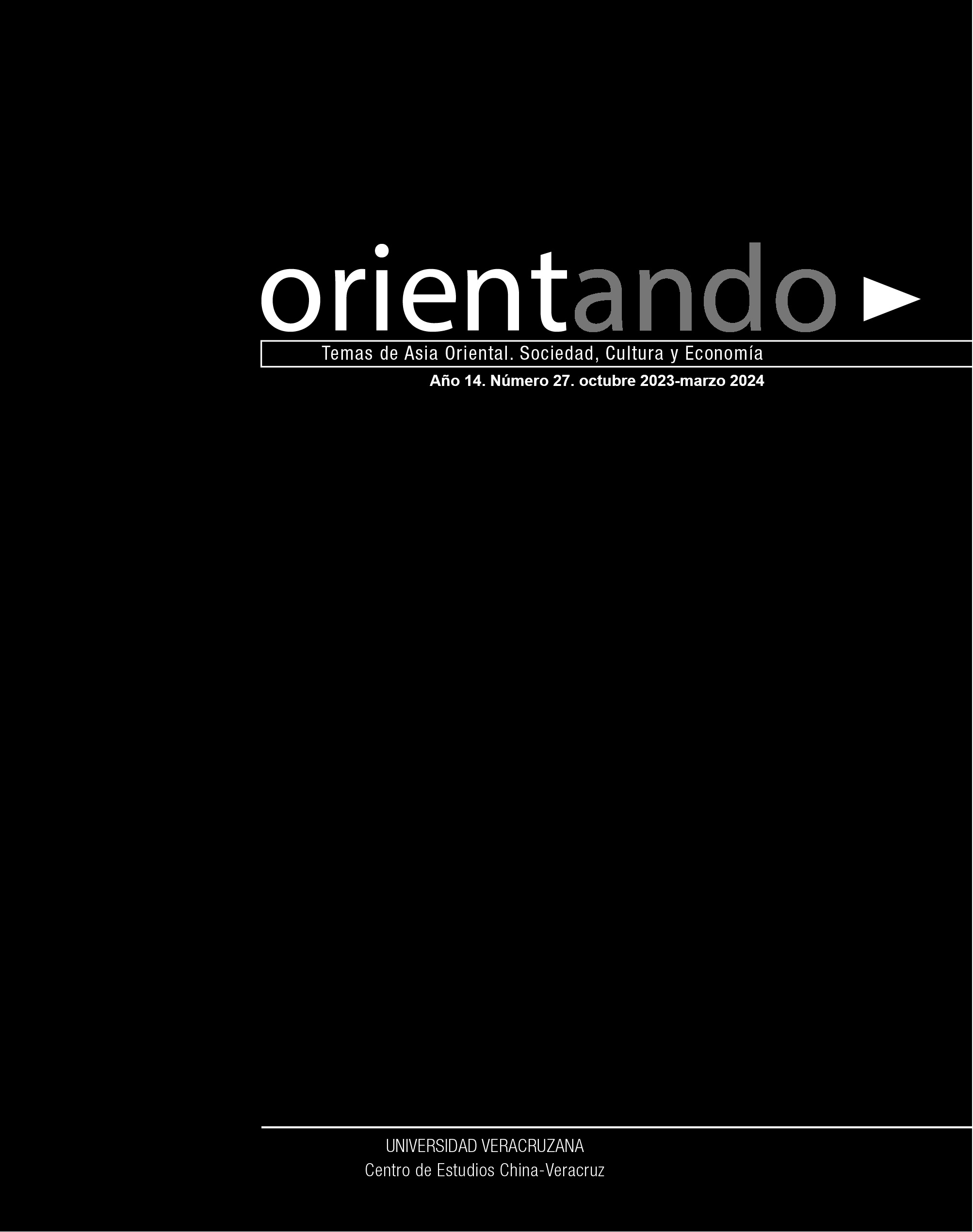Abstract
In order to examine how the authors of Chinese origin write and portray China and to explore the external and internal reasons for such representation, which is a novel and understudied topic so far, this article analyses and summarises the images of Chinese characters in Siu Kam Wen's El tramo final from the perspective of orientalism and imagology. We find that, as a writer of Chinese origin, he creates some images that, to some extent, are progressive and go beyond the boundaries of the stereotypes of the time, but there are still many stereotypical traces in his work, which, apart from the objective elements, is largely intentional on the part of the author. Eastern writers and the image of the East are still intertwined by many factors.
References
Alarcón, S. D. (2021). “Literatura como contrapoder: la construcción identitaria femenina en la obra de escritoras franco-magrebíes”. Anales de filología francesa, 29, 619-643.
Chumbimune Saravia, D. I. (2015). Migración china y orientalismo modernista. (Tesis para optar el Título Profesional de Licenciado en Literatura de grado), Universidad Nacional Mayor de San Marcos. Facultad de letras y ciencias humanas, Lima. https://cybertesis.unmsm.edu.pe/handle/20.500.12672/4888#:~:text=Aborda%20la%20percepci%C3%B3n%20de%20la%20migraci%C3%B3n%20china%20dada,peyorativa%20del%20migrante%20chino%20en%20la%20sociedad%20peruana
Cucarella-Ramon, V. (2022). “Diáspora y auto representación en la literatura afroespañola: Hija del camino, de Lucía Asué Mbomío”. Anales de Literatura Española, 37, 11-31.
Li Bidlingmaier, S. S. (2011). Spaces of Alterity and Temporal Permanence: The Case of San Francisco’s and New York’s Chinatowns. En O. Kaltmeier (Ed.), Selling Ethnicity: Urban Cultural Politics in the Americas (pp. 275–286). Surrey: Ashgate.
López-Calvo, I. (2008). “Sino-Peruvian Identity and Community as Prison: Siu Kam Wen's Rendering of Self-Exploitation and Other Survival Strategies”. Afro-Hispanic Review, 27 (1), 73-90.
McKeown, A. (2001). Chinese Migrant Networks and Cultural Change: Peru, Chicago, Hawaii, 1900-1936. Chicago: The University of Chicago Press.
Palma, C. (2007 [1897]). “El porvenir de las razas en el Perú”. Solar. Revista de Filosofía Iberoamericana, 3. Recuperado de http://revistasolar.org/wp-content/uploads/2016/04/1897_PALMA_El-porvenir-de-las-razas-en-el-Peru.pdf
Piel, J. (2014). Capitalismo agrario en el Perú. Lima: Institut français d’études andines.
Quaglia, M. (2012). “La escritura de una identidad chino-peruana. Una conversación con Siu Kam Wen”. Altre Modernità, 8, 281-290.
Said, E. W. (2015 [1978]). Orientalismo. Barcelona: Debolsillo Editorial.
Siu, K. W. (2013 [1985]). El tramo final. Barcelona: Plataforma.
Trinidad Manuel Pérez,Johnny Zevallos,Nurerdin-Kan Edición Crítica,Lima: Edición MYL,2020, pp.XIIILXVII.
Ysla Heredia, B. (2017). “Siu Kam Wen: ‘Íntimamente me siento chino; como escritor me siento peruano’”. Lee por gusto, 10 de abril de 2017. Recuperado de http://www.leeporgusto.com/siu-kam-wen-intimamente-me-siento-chino-como-escritor-me-siento-peruano/
李昕,陈卉婷.(2023). “拉美八家主流媒体二十大报道分析”.西部学刊(13):5-8. DOI:10.16721/j.cnki.cn61-1487/c.2023.13.002.
刘钰. (2020). 跨域体验的文学呈现——北美华文移民小说中的身份认同叙事. 吉林:吉林大学.
罗荣渠.(1980). “十九世纪拉丁美洲的华工述略”. 世界历史(04),34-41.
苏娉. (2020). “身份认同的缺失——从后殖民女性主义角度解读小说《宝塔》”. World Literature Studies, 8, 134.

This work is licensed under a Creative Commons Attribution-NonCommercial-ShareAlike 4.0 International License.
Copyright (c) 2025 Orientando

